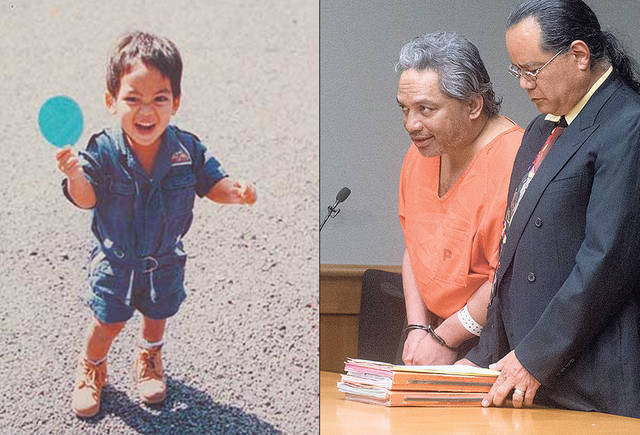Father takes police to where he left Peter Boy’s body

COURTESY PHOTOS
Peter Kema Sr., as part of a condition of a plea deal, led police on Sunday to a site in Puna where he claims he dumped his 6-year-old son’s body in 1997.
Hawaii County police will call in specialists — perhaps forensic anthropologists like those who search for the remains of service personnel missing in action — to comb through an area where the father of Peter Boy Kema says he disposed of his son’s body decades ago.
Peter Kema Sr., as part of a condition of a plea deal, led police on Sunday to a site in Puna where he claims he dumped his 6-year-old son’s body in 1997.
“We took him out for a reconstruction, and he guided us out to the Puna District, and explained the conditions under which he disposed of his son’s body, and pointed out the general area where it is,” police Capt. Randall Medeiros said by telephone today. “We weren’t able to locate the body immediately.”
Medeiros said Kema took police out to a large area that he was familiar with, but not near the Nanawale home where the Kema family lived when Peter Boy went missing.
After a few hours, Medeiros said, police realized they did not have the expertise to determine the location on their own and will seek help.
“The method we’re going to need to employ is beyond our capabilities,” he said. In searching for Peter Boy’s body in the past, the Hawaii County Police Department used the Joint POW/MIA Accounting Command (JPAC) and tools such as ground-penetrating radar, although that may not be used in this case.
Don't miss out on what's happening!
Stay in touch with breaking news, as it happens, conveniently in your email inbox. It's FREE!
“It has the potential to be quite an expansive area,” he said.
Kema and his wife, Jaylin, had lied to authorities and the public for nearly 20 years after their son, Peter Kema Jr., disappeared.
The Kemas were both arrested on suspicion of second-degree murder in April 2016. Peter Kema Sr. pleaded guilty earlier this month to manslaughter and five years for hindering prosecution.
As part of that plea deal, he had to lead police to the boy’s remains. But if police fail to find anything, he must take a polygraph test to ensure he is being truthful as to where he says the remains are.
He now faces a 20-year sentence, and must serve a mandatory minimum of six years, compared with a life sentence for a murder conviction.




